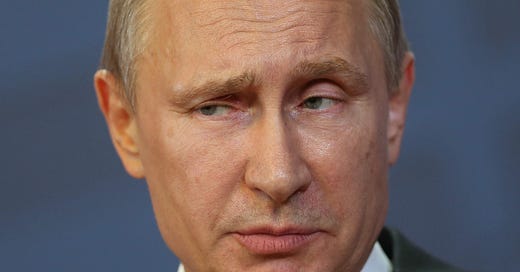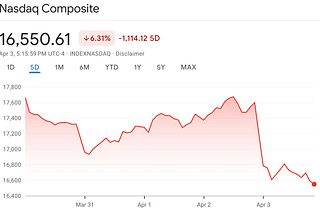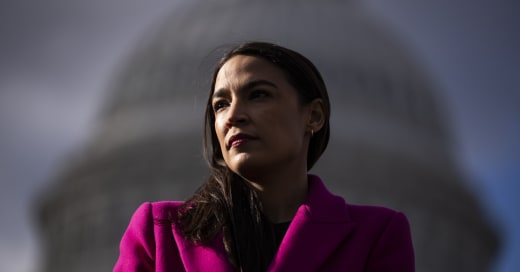
Put aside the legalisms and the partisan fighting and there’s a deeper question embedded in the Mueller report: Why is Vladimir Putin instigating a fight with the West? And why did he decide to use the European hard right and American alt-right as disruptive political forces?
These are simple questions with deeply complicated answers.
There are several things to keep in mind. First and foremost is that the Russian Federation believes that it is the victim and not the instigator in its tense relations with the West. They particularly view NATO expansion into what Russia refers to as its near abroad—and European Union expansion itself—as alliances which will be explicit counterweights to Moscow.
Second, Putin believes that Russia has been scorned by the West. Putin once dreamed of creating a grand alliance of Western nations—the United States, European Union, and the Russian Federation all connected by their opposition to Islamic terrorism, stronger links to Western markets, and Putin’s belief that the German social market created after the Wirtschaftswunder of the 1950s was the economic miracle needed following the Yeltsin era.
Knowing there would be no Marshall Plan to revitalize Russia, Putin slowly accumulated over $500bn in cash reserves over the course of a decade, ostensibly with the idea of using St. Petersburg and Moscow as hubs that would transform a backward Soviet wreckage in to the Russian chudo—a hypermodern technocracy.
Yet as Russia and the West moved more into opposition Russian policy experts came to believe that the implicit objective of Europe and America was to vivisect Russia until it could no longer project any sort of meaningful force. The Russians also believed that this was a mistake. As Dmitri Trenin warned, it is just as easy to imagine that a weak Russia could be more dangerous than a strong one and that a balkanized Europe would be more unstable and thus, more expensive to manage.
The problem, of course, was geopolitics. There are 144 million souls in Russia. Which is roughly the population of Germany and France combined. From the West’s perspective, it was difficult to ever see Russia as anything other than a potential threat to the stability of Europe.
And perhaps that is correct. Regimes come and go. Demographics and geography persist.
A strong Russia has historically proven to be dangerous to the “bloodlands” of Eastern Europe, as the historian Timothy Snyder warns repeatedly in his book The Road to Unfreedom.
It is true that Russia has been invaded three times along its near abroad and catastrophically had its frontiers pushed back in a peaceful fourth. But the second half of the 20th century offers a counter-narrative of what a strong Russia can do to Europe.
And so it is these two competing views which have shaped Russo-Western relations over the last 30 years. One sees the future following the path of the Velvet Revolution, Polish Solidarity, and the Visegrad Group. The other views the collapse of the old Soviet Union as “the greatest geopolitical catastrophe of the century.”
All of which brings us to Putin. It’s important to understand that Putin’s Russia is not a fascist state, but a form of Russian traditionalism—an ideology unique to the old Russian spirit of White February nationalism.
When Putin assigned his homework to the United Russia Party in 2014, it consisted of three Russian thinkers: Ivan Illyn, Nikolai Berdayev, and Vladimir Solovyov. These three philosophers—the first two as exiles from the Soviet regime—emphasized a Russian nationalism that modified liberal democracy with the benign rule of an autocratic elite, one that would take the dead bureaucracy of the state and give it the moral life that would prevent the rise of political religions, thus allowing the state to speak to the needs of the individual, rather than the masses.
There are several myths from these thinkers that have been wrapped into Putin’s idea of Russia: the idea of the Third Rome. That Novgorod is our father, Kiev is our mother, Moscow our heart, and St. Petersburg our head. That Russians defeated fascism, tried socialism—watched it fail—then tried liberalism—and watched it destroy the glory of the old Soviet Union.
When you put all of this into a blender, what you get is a fourth political theory that unites the “best” of socialism and fascism while discarding the shibboleths of liberal democracy. What you get is something that is both nationalist and Bolshevik, simultaneously.
What you get, in short, is Aleksandr Dugin.
Dugin fancies himself a theorist, but the truth is that he is many things. An author. A political adviser. An intellectual at the heart of Putinism. You might consider him as a Slavoj Zizek gone Martin Heidegger. Or a Jordan Peterson turned Friedrich Nietzsche. It is probably just a super-duper weird coincidence that America’s most famous neo-Nazi, Richard Spencer, was at one time married to the primary translator of Dugin’s work into English.
Unlike the post-Cold War Russian establishment which thought that Russia and the West should be in alliance, Dugin believes that Russia’s destiny lies in a grand Eurasian march that will slice off the Anglosphere and bring Europe into the Russian sphere of influence. He believes that geopolitics, not ideology, is the future. In his view, globalism represents the threat to Russian greatness insofar as it fuels American greatness, and therefore it is a weapon that strikes at the very soul of Russian unity.
The Russian Federation began their Internet Research Agency in early 2014, just when the Maidan uprising in Kiev joined a series of “democratic uprisings” in places such as Syria, Libya, and Egypt—all with either the approval or outright backing of American soft power.
To Moscow, this was backstabbing. In 1991 President George H.W. Bush gave what became known as the Chicken Kiev speech, in which he promised that the Ukraine would remain within the Russian orbit. In 2014, the Obama administration more or less sided with the Ukrainians. In Russia, this was viewed as nothing short of a coup against a democratically elected (if corrupt) pro-Russian government and a massive change in U.S. policy. It is not a stretch to suspect that the prospect of a President Hillary Clinton continuing to whittle away at the Russian near abroad was viewed by Moscow as an existential threat to be stopped at all costs.
Yet the Russian Federation did not stop with interfering in the American election. Across Europe, far right political parties that stood the best chance of disrupting the liberal democratic order found themselves awash in rubles. Marine le Pen’s National Front in France received loans from Russian lenders. UKIP and the Brexiteers have been questioned about their links to Russian financiers. Cambridge Analytica has links to Lukoil, the Russian energy firm now on the U.S. sanctions list. Breitbart pioneer Steve Bannon is now attempting to lead a coalition of hard-right organizations in Europe, many of whom have questionable ties to Russian financiers.
The key dynamic at play is this: Putin views the Russian Federation as co-equals with the European Union and the United States, and desires very much to be considered as a neo-Byzantine bulwark.
You could say that a strong Russia is an existential threat to the various nations that comprise the European Union. Or at least that a strong Russia is a threat to a weak Europe. Yet the threat Russia poses to Eastern Europe is primarily through asymmetric warfare, and if the bleeding in the Donbass region of Ukraine is any evidence, such bleeding is unlikely to last another five years without a paradigm shift.
If a strong Europe can countenance a strong Russia, then the decision point on Ukraine may prove difficult at first, but could end up serving as the starting point for a regional peace rather than conflict. Organizations such as the Visegrad Group could expand into the Baltics, southeastern Europe, and even Belarus and Ukraine as a regional guarantee that would serve as a bridge between NATO and Russia. A wider plan for de-escalation by returning to the Reagan-Gorbachev era ban on mid-range nuclear weapons, a commitment to eradicating the majority of the nuclear arsenals of both the United States and the Russian Federation, and the restoration of economic ties between the European Union and Russia would be conditional areas of progress.
If we have no desire to return to the bloodlands of Eastern Europe, then a peace built on both strength and trust requires a far different approach than the old Bush-Clinton era of confrontation. Policy makers should look to the next two decades and ask what sort of Russia Putin will leave behind. It will either be in the mold of Illyn and a peaceful rise in strategic cooperation with the West, or in the mold of Dugin—an angry, revanchist state which views the previous two decades as a form of victor’s justice.










